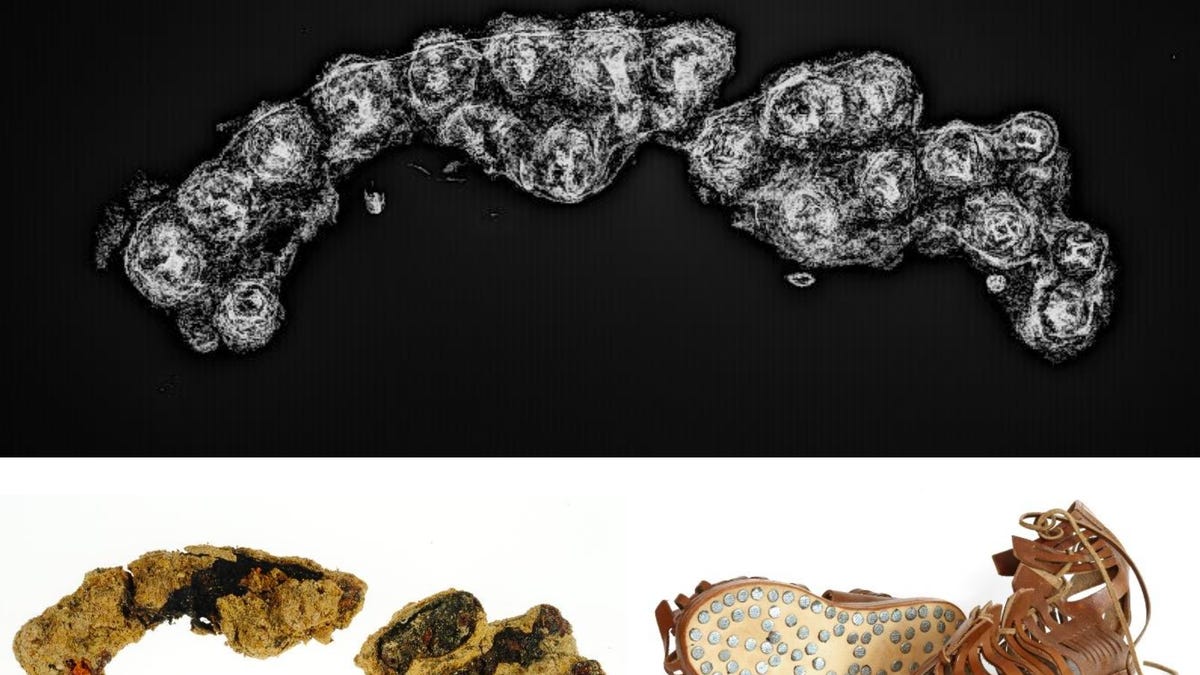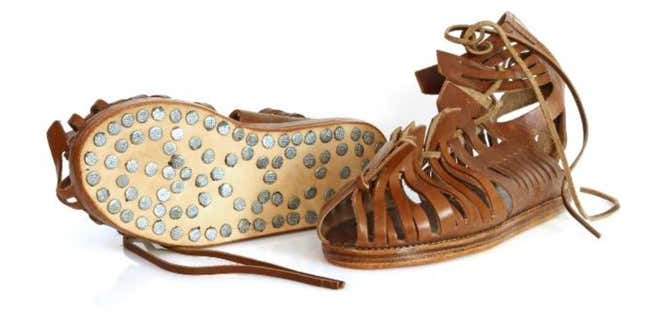
 Clockwise from the bottom-left: Roman sandal remains, an x-ray of the remains, and recreation of how the footwear might’ve originally looked.Graphic: Bavarian State Office for Monument Preservation and Marcus Regel/Mareg.net (Other)
Clockwise from the bottom-left: Roman sandal remains, an x-ray of the remains, and recreation of how the footwear might’ve originally looked.Graphic: Bavarian State Office for Monument Preservation and Marcus Regel/Mareg.net (Other)
At first blush, the remains of an ancient Roman sandal look more like little gnarled carcasses than footwear. But upon closer inspection and using X-rays, archeologists say the shoe parts they found at an ancient military site are unusually well preserved.
Suggested Reading
The 10 Most Entertaining Horror Movies on Netflix Right Now NASA Probe Spies Plumes Above Jupiter Moon's Lava Lakes Black Panther and Terminator Zero's Creators Are Teaming Up for a New Time-Travel Movie Florida Family Takes NASA to Court Over Home Damaged by Space Trash CC Share Subtitles- Off
- English
Suggested Reading
The 10 Most Entertaining Horror Movies on Netflix Right Now NASA Probe Spies Plumes Above Jupiter Moon's Lava Lakes Black Panther and Terminator Zero's Creators Are Teaming Up for a New Time-Travel Movie Florida Family Takes NASA to Court Over Home Damaged by Space Trash CC Share Subtitles- Off
- English
Discovered at a roughly 2,000-year-old fort near Oberstimm, a village in Bavaria, Germany, the shoe leftovers include a sole and iron nails, which would have offered traction over “rough terrain,” per a translated statement from the Bavarian State Office for Monument Preservation (BLfD). Typically, only the nails from such footwear remain, but this was a rare case in which the soles also endured. Archeologists found the remains in a well at the ancient fort; before the x-rays, they thought the twisted mass contained what was left of an old sickle, per a statement from the BLfD.
AdvertisementRelated Content
Apple's Incredibly Rare Sneaker From the '90s Selling for $50,000 Hiking Boots With a Piston Promise to Prevent Twisted AnklesRelated Content
Apple's Incredibly Rare Sneaker From the '90s Selling for $50,000 Hiking Boots With a Piston Promise to Prevent Twisted Ankles“So-called caligae [shoes] were worn mainly by Roman soldiers during the Roman Empire,” said Amira Adaileh, a consultant at the Bavarian State Office for Monument Preservation. However, the discovery “shows that the practices, lifestyles and clothing that the Romans brought with them to Bavaria were adopted by the local people.” Other findings at the site included Roman ceramics, food waste, and tools.
Advertisement Photo: Bavarian State Office for Monument Preservation and Marcus Regel/Mareg.net
Advertisement
Photo: Bavarian State Office for Monument Preservation and Marcus Regel/Mareg.net
Advertisement
While the remains look nothing like the “gladiator sandals” of today, they’re strikingly familiar — and maybe even stylish — in a recreation published by BLfD; it depicts how they might’ve originally looked, back when the Roman fort is thought to have been occupied, between A.D. 60 and 130.
 Psst! Do you accept cookies?
Psst! Do you accept cookies?
What's your thoughts?
Please Register or Login to your account to be able to submit your comment.